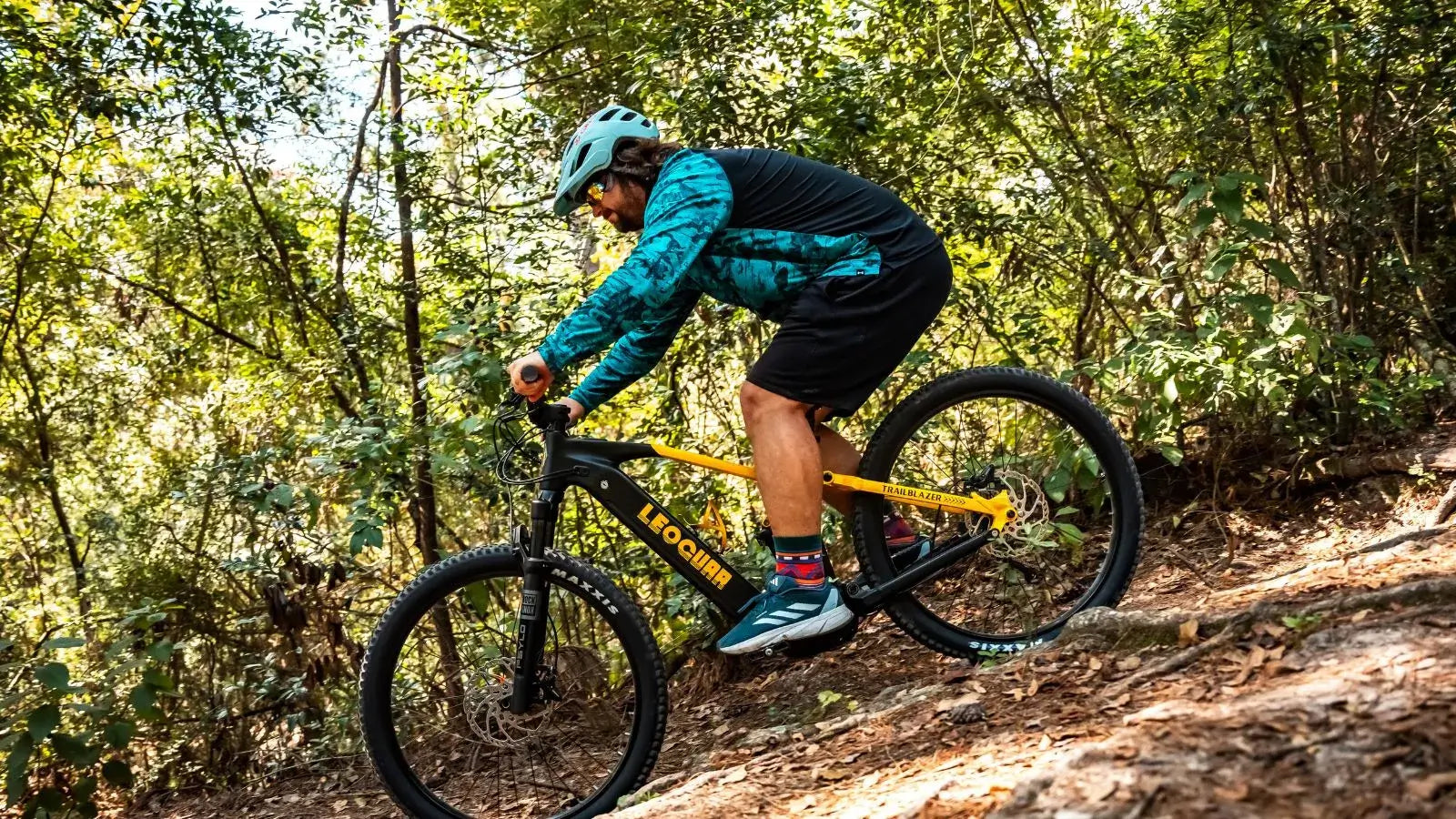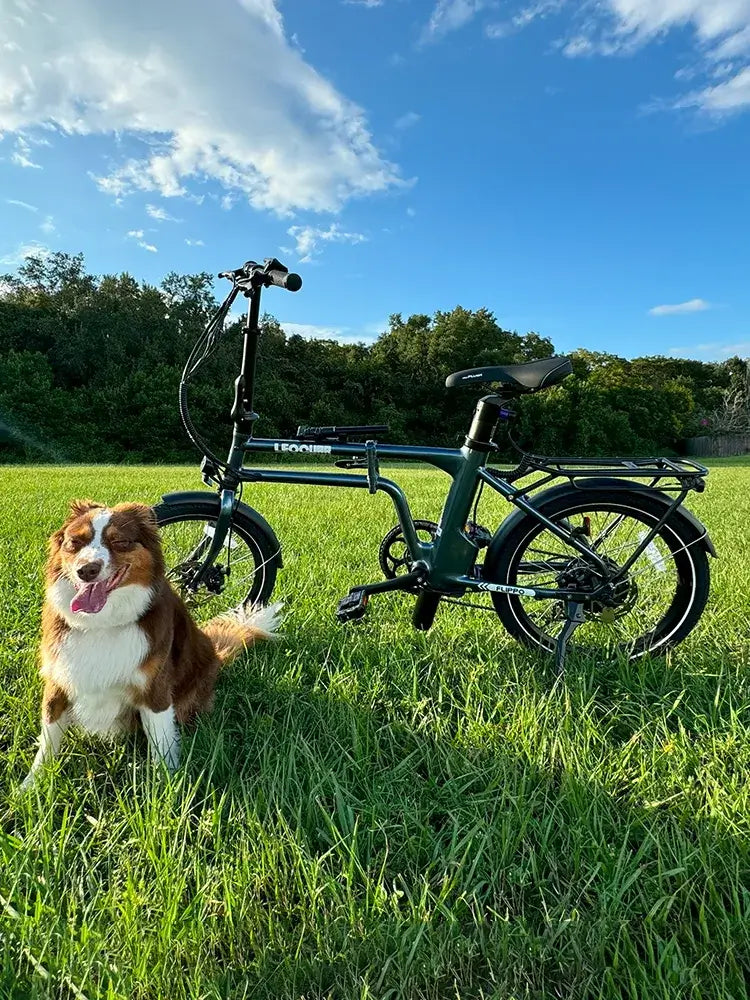
What Is an Average Bike Speed? How E-Bikes Compare in MPH and KM/H
Understanding Average Bike Speed
What is an average bike speed? It depends on many things. A cyclist's average speed changes based on fitness level, wind direction, and many other factors. However, we can set clear benchmarks for different types of riders. For most cyclists, this speed falls somewhere between 10 and 22 mph.
Electric bikes make this conversation more interesting. They help you maintain higher average speeds with less effort. They don't just make you faster. They make speed easier to reach for everyone.
Here are the typical average speeds you can expect:
- Beginner/Casual Rider: 10-12 mph (16-19 km/h)
- Recreational Cyclist: 12-15 mph (19-24 km/h)
- Experienced Club Rider: 15-22 mph (24-35 km/h)
- Average E-Bike Rider (with assist): 15-25 mph (24-40 km/h)
Traditional Bike Speeds Explained
We need to understand regular bikes first. The average speed on a traditional bike depends on the rider, the bike, and the terrain. A beginner riding a cruiser bike on flat paths will likely average 10-12 mph (16-19 km/h).
As fitness improves, riders often reach 12-15 mph (19-24 km/h). This is common for daily commuters on hybrid bikes or road cyclists on social rides. For experienced cyclists who ride with clubs, the average speed climbs much higher.
These skilled riders often maintain 15-22 mph (24-35 km/h) on flat terrain. According to Strava data, the global average for all cyclists is around 12.7 mph for men and 11 mph for women. This includes every type of ride, from mountain biking to city commuting.
The type of bike makes a huge difference. A lightweight road bike with thin tires will always be faster on pavement than a heavy mountain bike with thick tires. The table below shows these differences clearly.
| Rider Level | Bike Type | Typical Speed on Flats | Typical Speed on Mixed Terrain |
|---|---|---|---|
| Beginner | Hybrid/Cruiser | 10-12 mph (16-19 km/h) | 8-10 mph (13-16 km/h) |
| Intermediate | Hybrid/Road | 13-16 mph (21-26 km/h) | 11-14 mph (18-23 km/h) |
| Advanced | Road Bike | 17-22+ mph (27-35+ km/h) | 15-20 mph (24-32 km/h) |
| All Levels | Mountain Bike | 10-14 mph (16-23 km/h) | 6-10 mph (10-16 km/h) on trails |
The E-Bike Speed Factor
Electric bikes change how we think about average speed. Their main advantage isn't a higher top speed, but the ability to maintain consistently higher average speeds with much less effort. Hills that would slow a regular cyclist to a crawl become easy, and speeding up from stoplights becomes smooth.
In the United States, ebike speeds follow a class system. Understanding this is important because it controls the maximum speed where the motor helps you. These official e-bike classifications are:
- Class 1: The motor helps only when you pedal and stops helping at 20 mph (32 km/h).
- Class 2: The motor can work with a throttle, so you don't have to pedal. The help stops at 20 mph (32 km/h).
- Class 3: These are pedal-assist only but help up to 28 mph (45 km/h). They are often called "speed pedelecs."
While a Class 3 fast ebike can help you reach 28 mph, your real average speed will usually be lower. When you factor in stops, turns, traffic, and slower riding periods, most e-bike commuters average closer to 15-20 mph (24-32 km/h). This is still much faster than a traditional bike, often cutting commute times by 25-50% while requiring much less effort.
The motor does the hard work, letting you cruise at speeds that would normally require high fitness levels.
A Tale of Two Commutes: Pedal Power vs Electric Boost
Numbers help, but real experience shows the true difference. To show the practical impact on average speed, we tested a typical 5-mile (8 km) urban commute. The route had flat sections, several stop-and-go intersections, and one steep quarter-mile hill.
The Traditional Bike Journey
On a standard hybrid bike, the ride started well. We held a steady 14 mph on flat sections. At each stoplight, getting back up to speed took real physical effort. Then came the hill, and our speed quickly dropped from 14 mph to just 6 mph, with burning legs and a racing heart.
After reaching the top, it took time to recover and return to a comfortable speed. The effort was real, and we felt like we'd had a proper workout when we arrived.
The E-Bike Journey
Next, we rode the same route on a Class 3 e-bike using medium pedal assist. The difference was immediate and dramatic. Speeding up from stops was instant and smooth, needing little more than light pedaling. We maintained a steady 18-20 mph on flats with minimal effort.
When we reached the hill, we kept the same easy pedaling rhythm. The motor handled the strain, and our speed barely dropped below 15 mph. We arrived faster, more relaxed, and without sweating.
Here's how the two journeys compared:
| Metric | Traditional Bike | Electric Bike (Class 3) |
|---|---|---|
| Total Time | 22 minutes | 16 minutes |
| Average Speed | 13.6 mph (21.9 km/h) | 18.8 mph (30.3 km/h) |
| Speed on Hill | 6 mph (9.7 km/h) | 15 mph (24.1 km/h) |
| Effort Level | Moderate to High | Low |
| Arrival Feeling | Energized, slightly sweaty | Relaxed, ready for the day |
Factors That Affect Your Speed
Your average speed is never just one number. It changes based on several key factors, whether you're on a regular or electric bike. Understanding these helps you set realistic expectations and find ways to improve.
Your Fitness and Position
This is the biggest factor on a traditional bike. Your heart and muscle strength determine how much power you can produce and for how long. Even on an e-bike, a fitter rider can pedal faster than the motor's limit. Your riding position also matters a lot.
Sitting upright creates significant wind resistance, while a lower position can add 1-2 mph to your average speed with the same effort. To put fitness in perspective, a pro cyclist's power output can be double or triple that of a regular rider, letting them sustain speeds over 25 mph for hours.
The Terrain and Environment
Where you ride is just as important as how you ride.
* Hills: Climbing is the biggest speed killer, with a 5% grade easily cutting your speed in half.
* Wind: A headwind forces you to work much harder to maintain speed, while a tailwind feels like a free motor.
* Road Surface: Smooth asphalt offers the least resistance, while rough pavement, gravel, or dirt will slow you down considerably.
Your Bike and Equipment
Your gear matters more than you might think. A heavy bike is harder to speed up and climb with, while tire choice is also critical. Wider, knobby tires create more friction and are slower on pavement.
Making sure your tires have the correct air pressure is one of the easiest ways to reduce resistance and ride faster. This focus on specialized fitness and equipment shows how overall cyclist physiology is built purely for efficient forward motion.
How to Increase Your Speed Safely
Getting faster isn't just about training harder. It's about riding smarter with these five practical tips that can help you increase your sustainable speed, whether you're powered by legs, a motor, or both.
-
Master Your Pacing
A common mistake is starting too fast and burning out early. Instead, ease into your ride with a steady effort. On an e-bike, this means using lower assist on flat ground to save battery, then increasing it for hills or headwinds. -
Improve Your Cadence
Cadence is your pedaling speed, measured in revolutions per minute (RPM). Pushing hard gears at low RPM is inefficient and strains your muscles. Aim for a smooth, steady cadence of around 80-90 RPM for better endurance. -
Ride Aerodynamically
You don't need special clothing to be more aerodynamic. The simplest change is riding with hands on brake hoods and bent elbows. This lowers your body and reduces wind resistance significantly. -
Look Ahead and Maintain Momentum
Momentum is your best friend since every time you brake, you waste energy. Scan the road far ahead and anticipate red lights so you can coast through as they turn green. Take wide, smooth turns instead of braking hard and speeding up again. -
Use Your Gears Proactively
Shift gears before you need to, not after you're already struggling. As you approach a hill, shift to an easier gear while your cadence is still high. The same applies to e-bike assist levels - increase power before you hit the climb for smooth transitions.
With smart riding, the benchmark for a decent club cyclist of averaging 20 mph becomes much more achievable.

Your Pace, Your Ride: Picking the Right Speed for You
The discussion of average bike speed comes down to personal context. While a recreational cyclist might average 12-15 mph, an e-bike can easily boost that to 15-20 mph, turning a sweaty workout into a comfortable commute. Factors like fitness, bike type, terrain, and wind will always play a role in your final speed.
The most important point is that there's no single "correct" speed. The best pace is one that's safe, enjoyable, and helps you reach your personal goals - whether that's getting to work on time, improving fitness, or simply enjoying the freedom of two wheels.
FAQ
1. What is the average speed of an electric bike?
The average speed of an electric bike typically ranges from 15-20 mph (24-32 km/h) in real-world conditions. While Class 3 e-bikes can assist up to 28 mph, factors like stops, traffic, and terrain usually result in lower average speeds during actual rides.
2. How much faster is an e-bike compared to a regular bike?
E-bikes are generally 25-50% faster than traditional bikes for the average rider. A recreational cyclist who averages 12-15 mph on a regular bike can typically maintain 15-20 mph on an e-bike with much less effort, especially on hills and during acceleration.
3. What factors most affect my cycling speed?
The biggest factors affecting cycling speed are your fitness level, terrain (especially hills), wind conditions, bike type, and riding position. On traditional bikes, fitness is the most important factor, while e-bikes help level the playing field by providing motor assistance.
4. Can beginners achieve good speeds on e-bikes?
Yes, beginners can achieve speeds of 15-18 mph on e-bikes with minimal effort, which would typically require significant fitness on a traditional bike. The motor assistance makes higher speeds accessible to riders of all fitness levels while reducing fatigue.
5. How can I improve my average cycling speed?
To improve your average speed, focus on maintaining steady pacing, keeping a cadence of 80-90 RPM, riding in a more aerodynamic position, anticipating stops to maintain momentum, and shifting gears proactively. On e-bikes, learn to use assist levels strategically to maintain consistent speeds.
















































Leave a comment
Please note, comments must be approved before they are published.
This site is protected by hCaptcha and the hCaptcha Privacy Policy and Terms of Service apply.